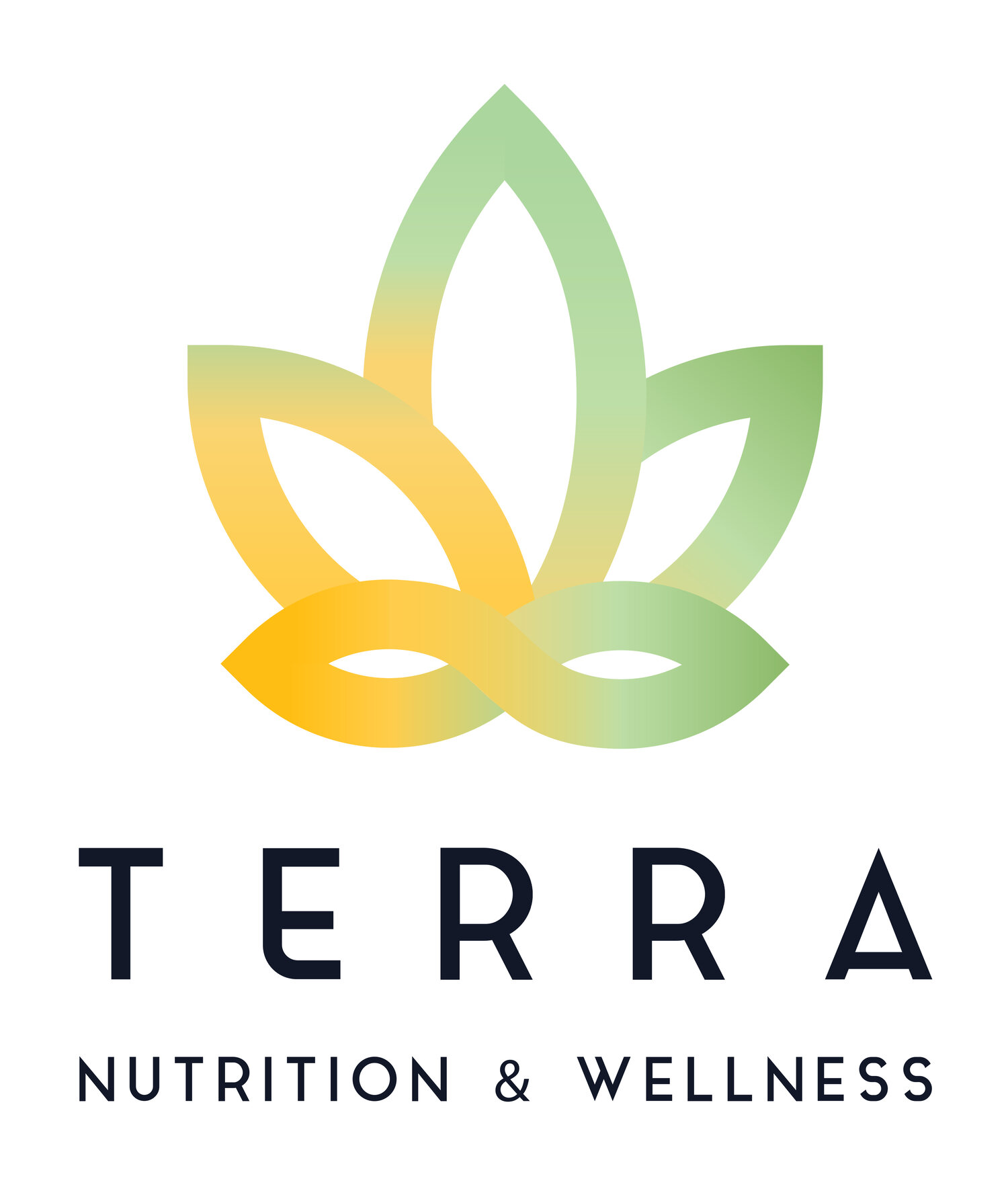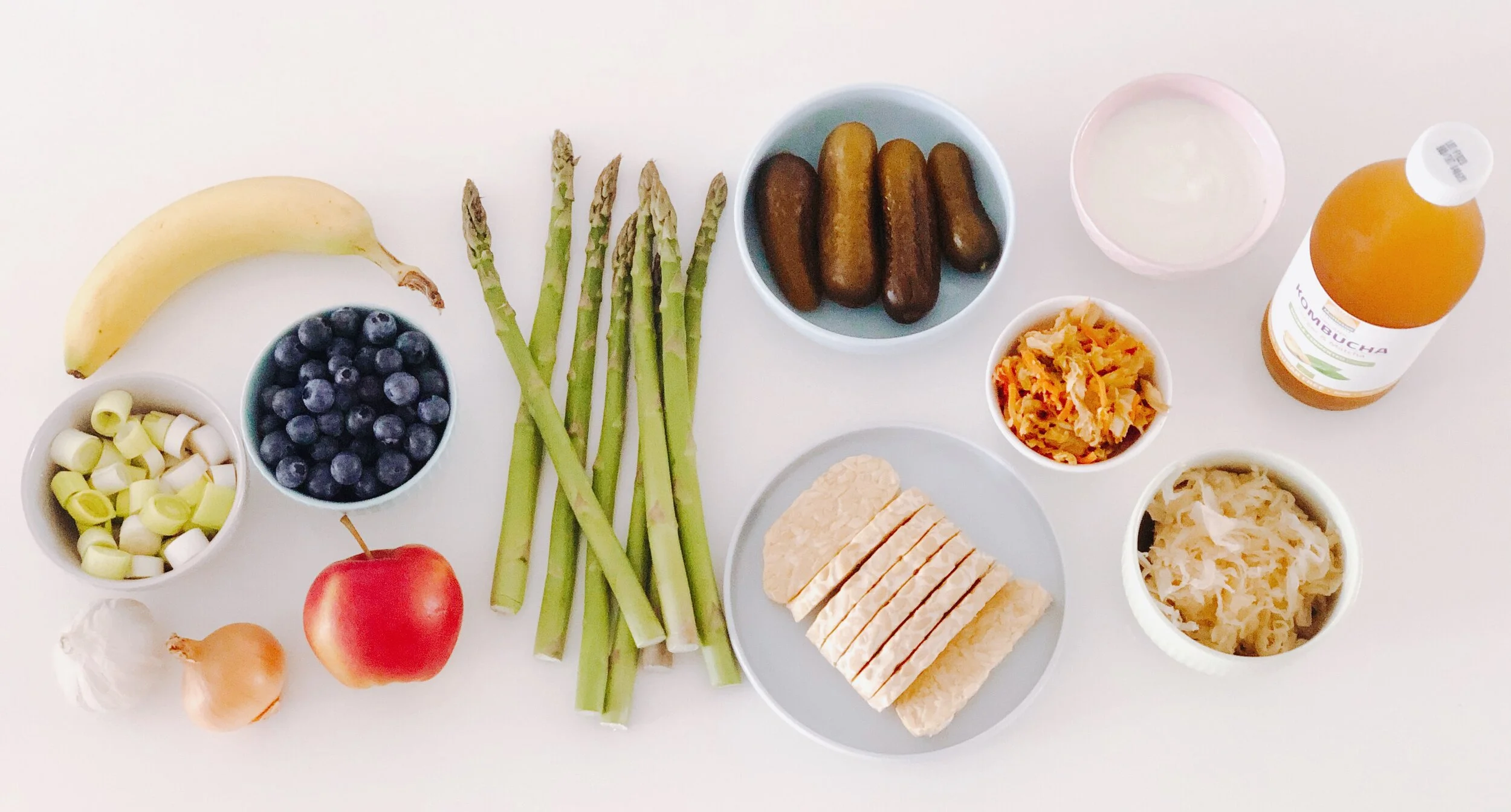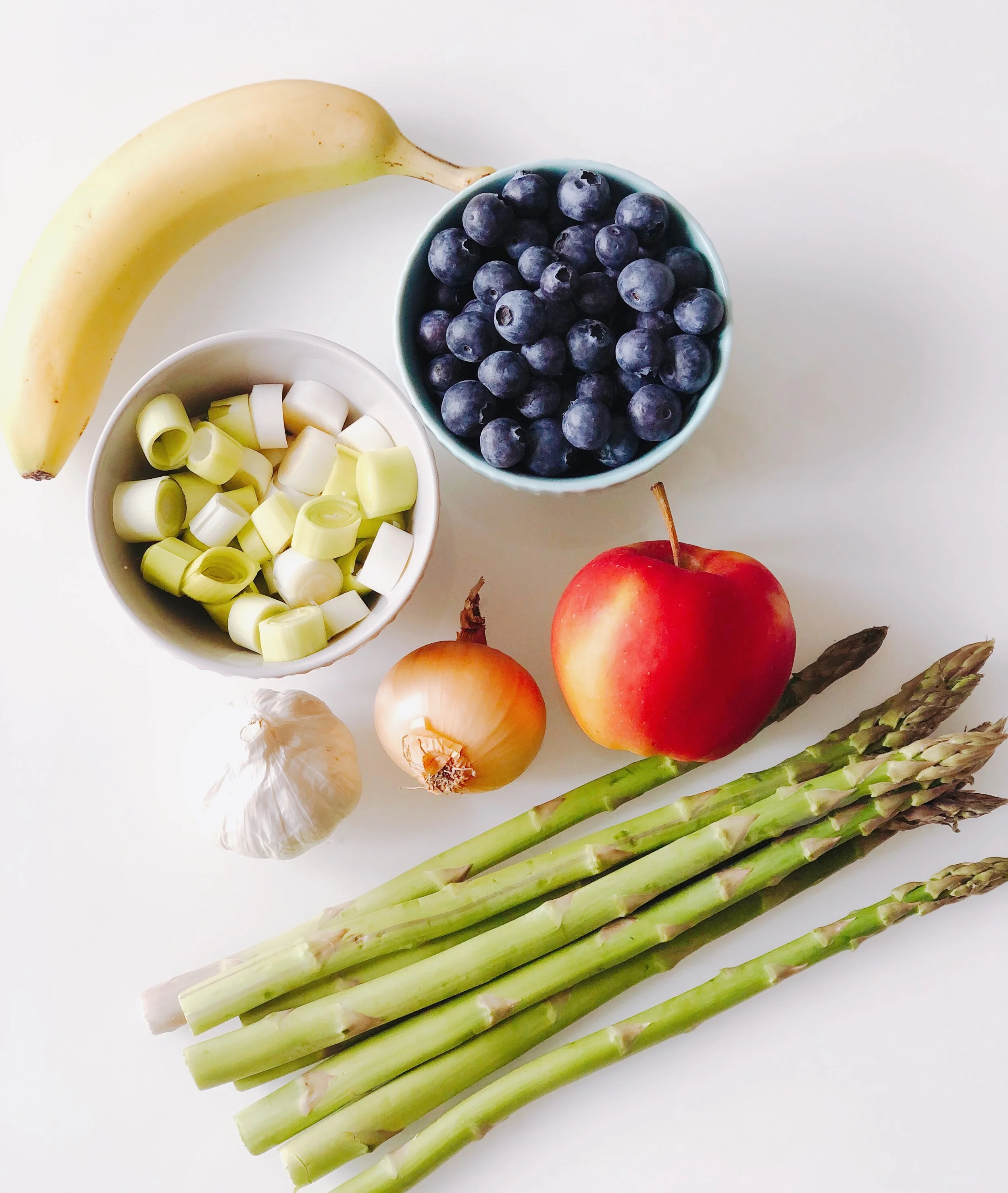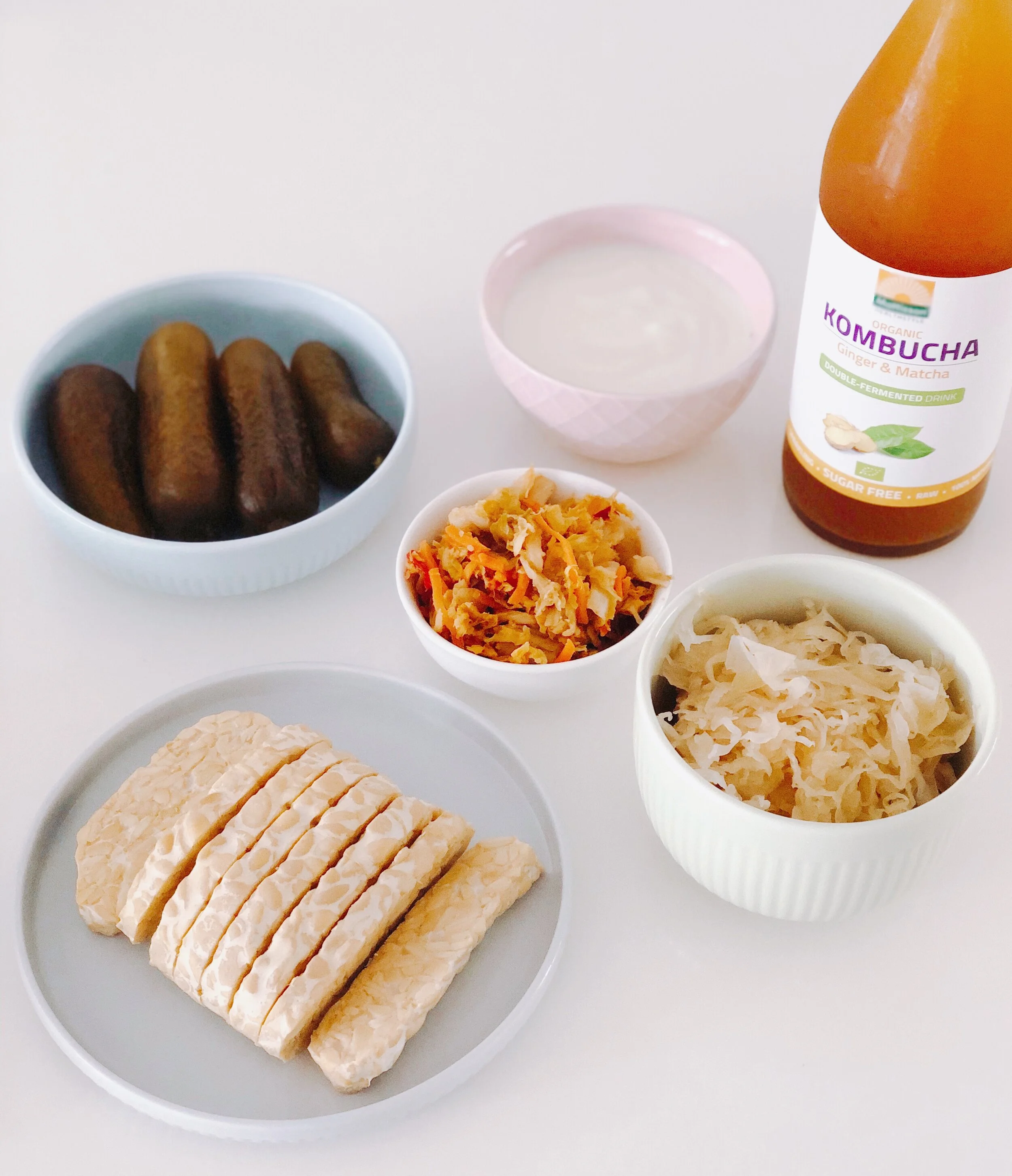Prebiotic vs Probiotic Foods
In my previous post I wrote about the gut microbiome and how to generally take care of your gut microbiome. One of the many ways, is to include prebiotic and probiotic foods regularly in your diet. Thou, they sound familiar they are not the same. This is why I decided to discuss them further here and give you some examples of prebiotic and probiotic foods.
Prebiotic foods
Prebiotic Foods are a type of non-digestible fibre in certain plant-based foods, such as oligosaccharides, galacto-oligosaccharide (GOS), and inulin, they stimulate the growth and activity of your body’s beneficial bacteria (probiotics) which are already in the large bowel or colon, acting like a fertiliser for the gut[1]. This helps your gut bacteria produce nutrients in your colon and leads to a healthier digestive system.
List of prebiotic foods:
Onions
Garlic
Jerusalem artichokes
Chicory root
Dandelion leaves
Green to yellow Bananas (chose under-ripe bananas)
Leeks
Asparagus
Barley
Oats
Apples (with skin)
Blueberries
Have at least one serving of prebiotic foods a day. One serving would be 50 gr. So, for example 50 gr of blueberries or 1 apple with skin per day as snacks between meals. Another great way is to use onions and garlic as a base when cooking, not only will they bring rich flavour to your meals but also they will feed your beneficial gut bacteria. Always remember to include variety in your meal plan.
Prebiotic foods feed your beneficial gut bacteria.
Probiotic foods
Probiotic foods are naturally fermented foods and unpasteurised foods, that may help supply plenty of beneficial bacteria to the intestinal lining. They help maintain the balance of your gut flora and promote optimal overall gut health.
List of probiotic foods:
Natural yogurt
Milk kefir
Water kefir
Kombucha
Sauerkraut
Kimchi
Tempeh
Miso
Fermented vegetables such as pickles etc.
Include probiotic foods in your diet on a regular basis, ideally every day. Start with something familiar like natural yogurt and then see how you can add more variety to the rest of your meal plan. Note that many of the fermented vegetables such as kimchi, sauerkraut, fermented pickles etc. may contain a lot of sodium so you might chose a smaller portion if you need to watch out your sodium intake. You can eat prebiotic and probiotic foods together in one meal or separately throughout the day, just remember to eat a variety of both in order to reap from all of their health benefits.
Probiotic foods provide your gut with beneficial bacteria.
Bottomline, is to remember that prebiotic foods feeds the beneficial gut bacteria and probiotic foods provide your gut with beneficial bacteria. As you see both prebiotic and probiotic foods are essential to your diet and work synergistically to maintain a healthy gut and support your overall health.
Which of the above have you tried? What works best for you?
References:
Sentenac H., (2018) Why You Need Both Probiotics and Prebiotics for Good Gut Health and Overall Wellness (Plus the Best Food Sources). Available at: https://foodrevolution.org/blog/probiotics-and-prebiotics/



